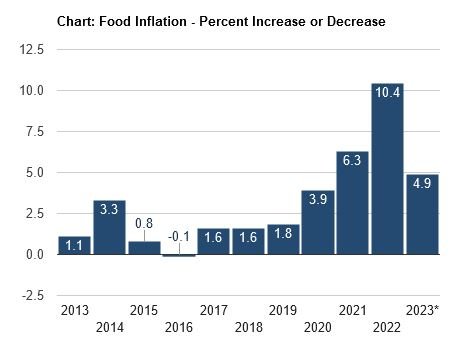When the cost of food rises, does the CPI assume that consumers switch to less desired foods, such as substituting hamburger for steak?
No. In January 1999, the BLS began using a geometric mean formula in the CPI that reflects the fact that consumers shift their purchases toward products that have fallen in relative price. Some critics charge that by reflecting consumer substitution the BLS is subtracting from the CPI a certain amount of inflation that consumers can "live with" by reducing their standard of living. This is incorrect: the CPI's objective is to calculate the change in the amount consumers need to spend to maintain a constant level of satisfaction.
Specifically, in constructing the "headline" CPI-U and CPI-W, the BLS is not assuming that consumers substitute hamburgers for steak. Substitution is only assumed to occur within basic CPI index categories, such as among types of ground beef in Chicago. [Joe comment: they go to WalMart, LOL] Hamburger and steak are in different CPI item categories, so no substitution between them is built into the CPI-U or CPI-W.
Furthermore, the CPI doesn't implicitly assume that consumers always substitute toward the less desirable good. Within the beef steaks item category, for example, the assumption is that consumers on average would move up from flank steak to filet mignon if the price of flank steak rose by a greater amount (or fell by less) than filet mignon prices. If both types of beef steak rose in price by the same amount, the geometric mean would assume no substitution.
In using the geometric mean the BLS is following a recognized best practice for statistical agencies. The formula is widely used by statistical agencies around the world and is recommended by, for example, the International Monetary Fund and the Statistical Office of the European Communities.

